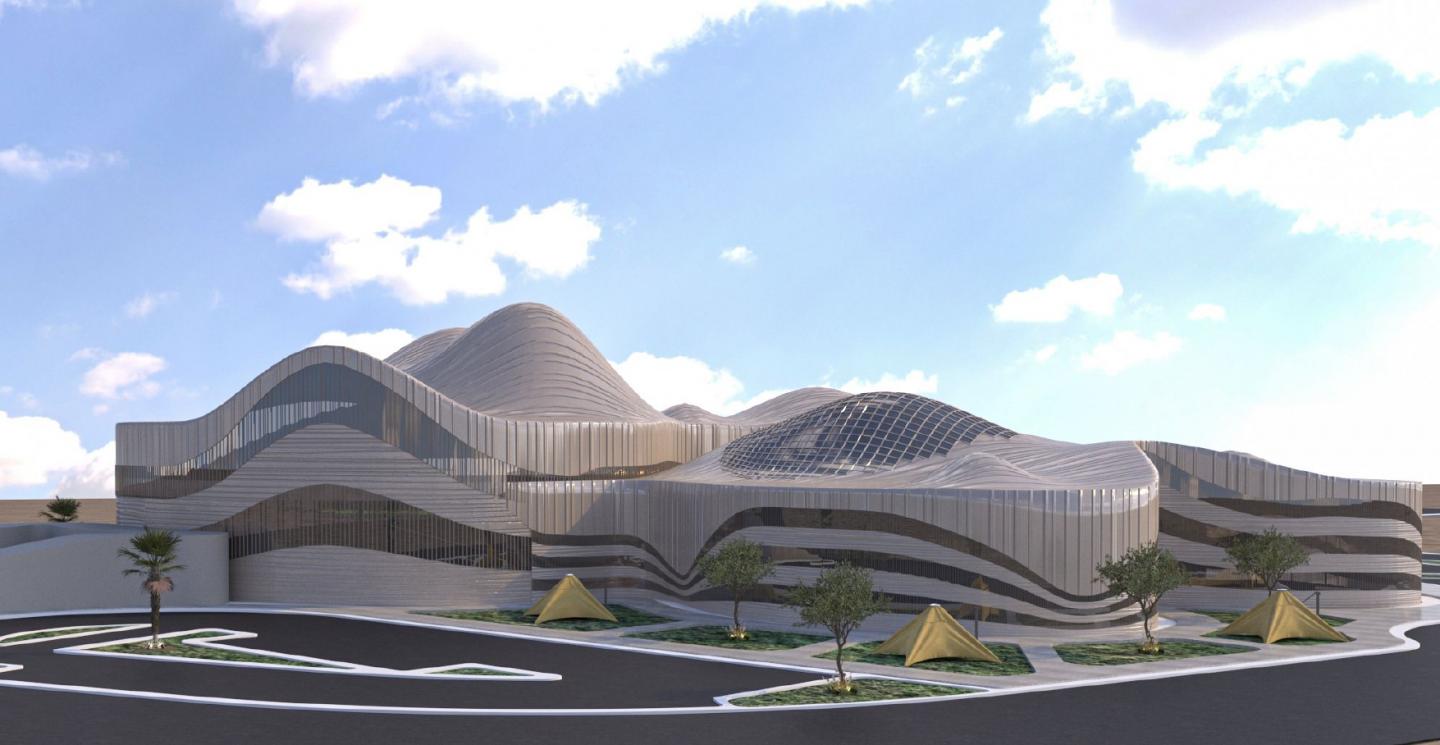The Camel Museum in Taif is an innovative cultural and technological landmark dedicated to preserving the rich heritage of camels in Arabian history while integrating cutting-edge digital experiences. Situated near the Taif Camel Racecourse, the museum enhances the cultural, touristic, and economic significance of the region, aligning with Saudi Vision 2030 to promote heritage tourism and sustainable development.
Architectural Vision & Concept
Inspired by the undulating dunes of the desert and the swift motion of racing camels, the architecture seamlessly blends tradition with modernity. The design prioritizes eco-friendly solutions, including passive cooling, solar energy, and AI-driven smart systems. Visitors will experience augmented reality (AR) storytelling, interactive displays, and immersive simulations that bring camel history and racing to life.
Program & Spatial Experience
The museum is divided into key zones, including:
Historical and cultural exhibitions showcasing artifacts and the role of camels in Saudi heritage.
Interactive VR experiences allowing visitors to engage in camel racing simulations.
Research and innovation labs dedicated to camel breeding, health, and training advancements.
Workshops and amphitheaters for live educational demonstrations and cultural performances.
A modernized camel racing facility integrated with smart technology for enhanced experiences.
Cultural & Economic Impact
By merging tradition with technology, the project fosters economic growth, tourism, and cultural preservation, positioning Taif as a global hub for camel-related industries. It attracts researchers, tourists, and camel enthusiasts worldwide, reinforcing Saudi Arabia’s leadership in heritage conservation.
This project is not just a museum—it’s a living experience that bridges the past with the future.
2025
Site Area: 15,000 m²
Built-up Area: 6,800 m²
Construction Materials:
The museum is designed with a focus on sustainability and environmental harmony, utilizing eco-friendly and locally sourced materials. These include:
Natural Stone & Rammed Earth: Provides thermal insulation and blends with the natural landscape of Taif.
Recycled Timber & Bamboo: Used for interior finishes and shading elements.
Glass & Steel: For structural transparency and modern aesthetics while maintaining durability.
Green Roof & Permeable Pavements: Enhance thermal comfort and reduce heat absorption.
Sustainability Features:
Passive Cooling Strategies: Natural ventilation, wind catchers, and thermal mass walls to reduce energy consumption.
Solar Energy Integration: Photovoltaic panels on the roof to generate renewable energy for lighting and operational systems.
Rainwater Harvesting System: Collects and filters rainwater for landscape irrigation.
Smart Lighting & HVAC Systems: Automated and AI-driven systems to optimize energy efficiency.
Waste Management System: Recycling and composting facilities to minimize environmental impact.
Smart Technology Integration:
Augmented Reality & AI Guides: Enhancing visitor experience with interactive storytelling and virtual exhibits.
IoT-Based Monitoring System: Real-time data collection for energy consumption and climate control.
Interactive Digital Displays: Engaging visitors with real-time race data, camel heritage stories, and immersive experiences.
Structural System:
Flat Slab System: Provides flexibility in interior space planning and enhances structural efficiency.
Space Frame System: Used for large-span areas such as exhibition halls, ensuring lightweight yet strong structural support.
Project Lead: Noura Abdullah Mohammed
University: University of Business and Technology - Faculty of Architecture
Academic Supervisor: Eng.Abrar Baamer










